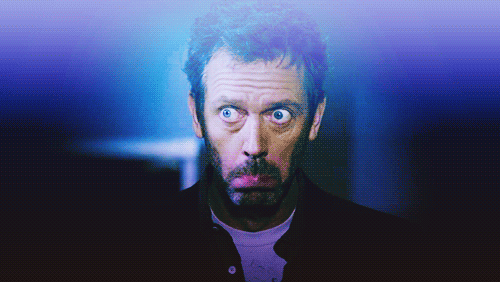I’m reading some true crime for reviewing at the moment, and… there are issues. Nothing so soul destroying that I threw the books away or anything like that- I’ve even got post it flags and notes throughout. But still, there are elements that make them far harder reads than they should be.
So here are some things I’ve learned about true crime writing while reading:
There’s a difference between factual and boring.
You don’t have to ramp up the cheese factor, or anything like that. But readers should have an emotional connection to the story being told. These are not fictional characters. They are real people who lived, and loved, and whose lives were cut short. The person who killed them lived in our communities with us. They passed as utterly ordinary. We, or someone we love, could have passed that person on the street, or come into their sights somehow, without ever even realising it. That is a scary, scary thought.
Don’t turn an emotional event into a dry retelling from a history book. You can be truthful and factual without losing the emotion behind the event.
Vague doesn’t suit you.
I’m not saying be so graphic you’ll give everyone nightmares or make readers puke. True crime does have to balance the family’s feelings, the victim’s modesty, and the right to privacy of the perpetrator against the information being relayed.
But let’s be honest: vague descriptions are worthless. If you’re ‘showing readers around’ a crime scene, do it in such a way that they can picture it, at least a little. ‘Forest’ is meaningless. Are we talking dark, cool, lots of trees close together? Or rocky bushland style forest where there’s lots of light and heat and at least a bit of space between large trees? You don’t have to explain the injuries in graphic, morbid detail, or the stench of decay, or be graphic about the crime itself. But the place is important, so we should be able to know, at least a little, what it looked like.
You’re writing about something you clearly think readers can and should care about. Give them the chance to care about it by adding details where possible.
People matter.
If you’re talking about a person, especially a victim, make sure readers can picture them. Give them life, and make them memorable. Being vague ups the chances that even your most dedicated reader is going to get confused, especially if there’s more than one victim being discussed. Let’s say your perp targets young blonde women. As a reader, I need to be able to tell them apart, need to remember who is who and where they fit in the timeline. Maybe one woman always wore a certain colour. Maybe another wore a particular necklace everywhere. There are always differences. Perhaps their killer considered them interchangeable, but that’s not an idea the reader should ever, ever hold.
Honour the victims by letting them be unique, memorable people beyond the notoriety that comes from being a part of a crime.
They didn’t have agency in their final moments- someone else exerted control over their futures- but gorram it, each and every ‘victim’ is far more than that. That was a brief span of time in years of life- don’t diminish them by making them nothing more than a victim. Every single person had hopes, dreams, and plans for the future. They weren’t arbitrarily wandering around, awaiting their fate. They existed and had meaning before they came into contact with the perpetrator. They were, and are, more than an act of violence committed upon them.
Let me put this in real terms: whenever there’s a mass shooting in the US, we all hear about the killer, right? And the victims don’t rate a mention in the mainstream narrative beyond how many there were. Even when they’re little kids, or teachers using their bodies to shield little kids, everyone is so hyped up about omg MONSTER that they forget that there’s other people involved. It’s like suddenly, these innocent people become statistics or props rather than human beings. Their lives become a tiny footnote in the story of the killer, which, to be honest, is BS. Inadvertently, the media/true crime writer is falling into the exact same mentality that the murderer had: that the killer matters more. That those people don’t matter beyond their role as victims. That they have been made lesser than and meaningless beyond their role in the perpetrator’s life.
Just… don’t.
If the story is self-focused, make that clear.
If the story is looking at how a crime impacted you personally, then don’t frame it as if it’s a procedural focus. There’s a difference between, say, a detective’s account of a case they’ve worked on, and a detective’s account of how a particular case impacted their life. One is true crime, the other is memoir with a true crime element.
Memoir focused work is about you. The story of how a case was solved is not just about you. Both are totally valid options in telling the story- it’s only a problem when you call it something it actually isn’t.
When a procedural focused work starts spotlighting one hero in a team (especially if that hero just so happens to be the writer), it casts serious doubt on what’s being said. The story is bigger than a single person, and when it looks like the story is being driven by ego, readers start wondering how much is true, and how much is edited to make you look good.
Tangents are the Devil’s work.
Maybe there’s this thing that’s e’er so slightly connected. It’s one of those if you squint just so and the stars align right, you can make out the teensiest hint of connection there type deals. Don’t go there. Don’t run off on tangents, especially ones where the only real connection is yourself.
If you’re talking about unsolved crimes that are possibly the work of the person you’re writing about, fine. That’s entirely relevant. But if other cases have nothing real to do with the story you’re telling, leave them out. If they don’t fit the MO, and are known to be the work of someone else, why are they being mentioned? What do they add to the story?
This is also a point where memoir need to be signposted. If you’re talking about other things you’ve done in your career, it’s got no business in a book about how a team solved a particular case unless it’s explicitly connected to that particular case.
Answer the big (relevant) questions.
When you’re talking about an actual crime that actually happened, questions arise. Some are fairly important- why did someone do something in a particular way? Why did the methodology change, but only once? Was the killer acting alone? What triggered the event?
Maybe you can’t answer all of them, but at least try.
If there’s doubt about those answers, give the information to the reader and let them decide.
Conversely, though:
Evidence me, mofos.
There are little bits and bobs that add detail and flavour, sure, but when it comes to the big ticket ideas, like oh, say, a person’s guilt? I want, and need evidence. ‘He accidentally confessed to me in a private, unrecorded conversation, even though he’s denied it forever’ isn’t evidence, because it’s got nothing to back it up. You can’t prove it in any meaningful way, because both sides have bias and the motivation to exaggerate or withhold the truth.
It seems a little too convenient, truth be told. He lied to you in the investigation, and the trial, and in interviews after he was jailed, and yet somehow, he just happens to blurt out a random confession-ish declaration? He was a fiercely controlling sort, but he just so happened to goof while you were right there in front of him? Convenient.
It’s also especially problematic when the admission isn’t clear cut, but can be taken as a ‘yes, I know you think it was me’ rather than ‘it was me! *evil maniacal laugh*
Hakuna your tatas with that ‘good and evil’ shtick.
Someone’s life has been taken, or destroyed. The story is sensationalist enough without adding the good and evil melodrama to the mix.
I don’t need to see a writer calling the perpetrator evil, or a monster, or any of those other overused buzzwords that distance the perpetrator from humanity so that we can all go to bed thinking that he’s not like us. We’re safe.
No. Screw that. The devil is not in that perpetrator, and when you’re writing true crime with that mentality, you’re missing the point. The devil didn’t do it. A human being did. It’s not about angels and devils and darkened souls, it’s about the good and bad inherent in all humanity. It’s about how one person can do horrible things to other people, often without anyone really noticing. It’s about how society deals with that, and heals from it. And learns from it.
As soon as the ‘monster’ card gets played, we stop learning. When we pretend that perpetrators aren’t human, it’s easier to assume that there’s nothing we can do about it. They’re just these things that show up from time to time with no warning and no chance of stopping them. Psychology says that’s not true. So let’s leave that boogegy boogedy crap out of true crime writing, shall we?


